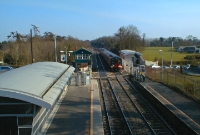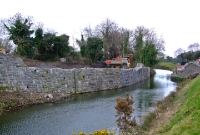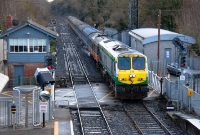Clonsilla
Clonsilla, on the extremity of Dublin's western suburbs, was once an important location on the Midland Great Western Railway's Dublin to Sligo line. Clonsilla was original closed in 1947, but reopened in 1981 with the introduction of the new commuter service to Maynooth, by which time most of the original station buildings had been demolished. Clonsilla was also the junction of the 1862 built Dublin & Meath Railway line, which diverged just west of the station and headed north to Navan. Passenger services on the Navan line ceased in 1947, but the line remained in use for occasional goods traffic until 1963. However in September 2010 part of the Navan line was reopened as far as Dunboyne, with a proposed reinstatement to Navan in the future.
The line between Clonsilla and Maynooth was re-doubled between 1999 & 2000, having been singled by the Great Southern Railway way back in 1929. This also brought about upgrading of the signalling and stations on the line, however due to the busy level crossing at Clonsilla; the typical MGWR signal cabin survives and still controls the crossing gates.
The line between Clonsilla and Maynooth was re-doubled between 1999 & 2000, having been singled by the Great Southern Railway way back in 1929. This also brought about upgrading of the signalling and stations on the line, however due to the busy level crossing at Clonsilla; the typical MGWR signal cabin survives and still controls the crossing gates.


































